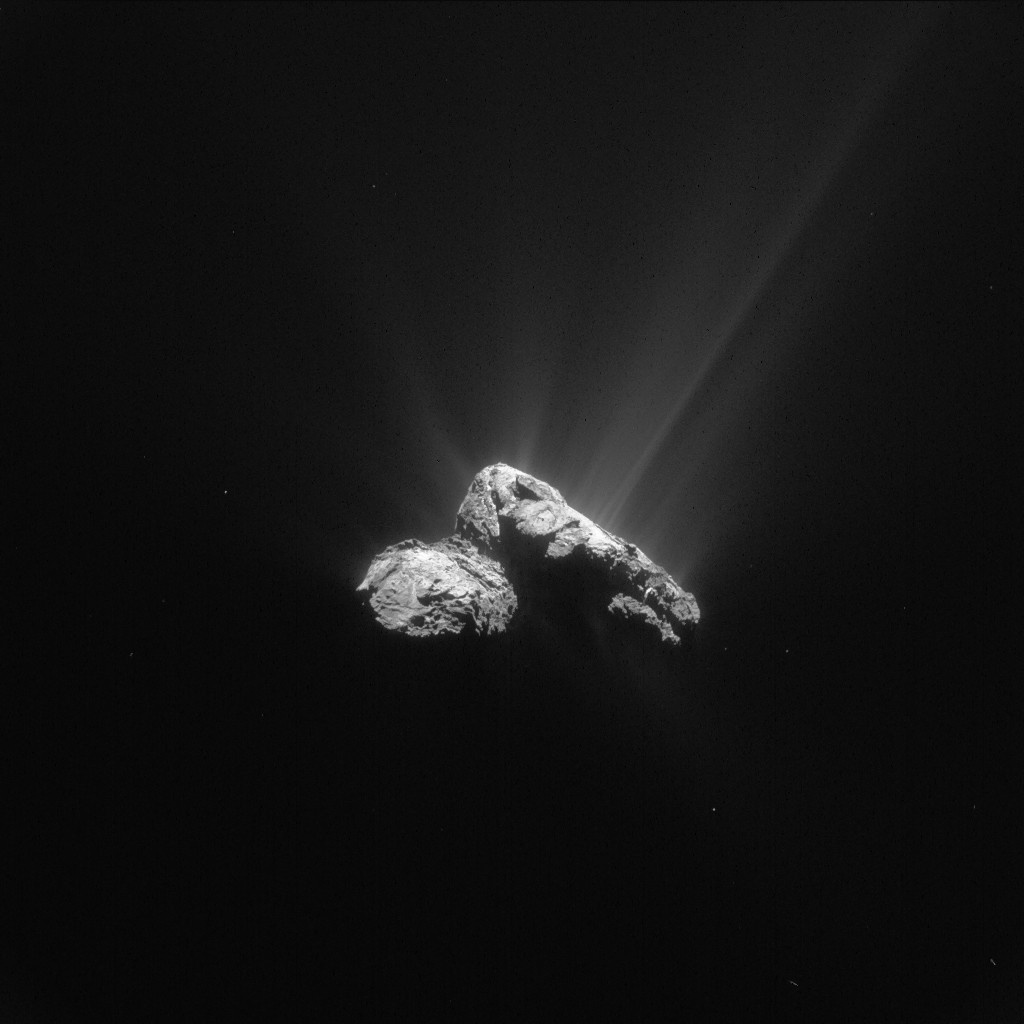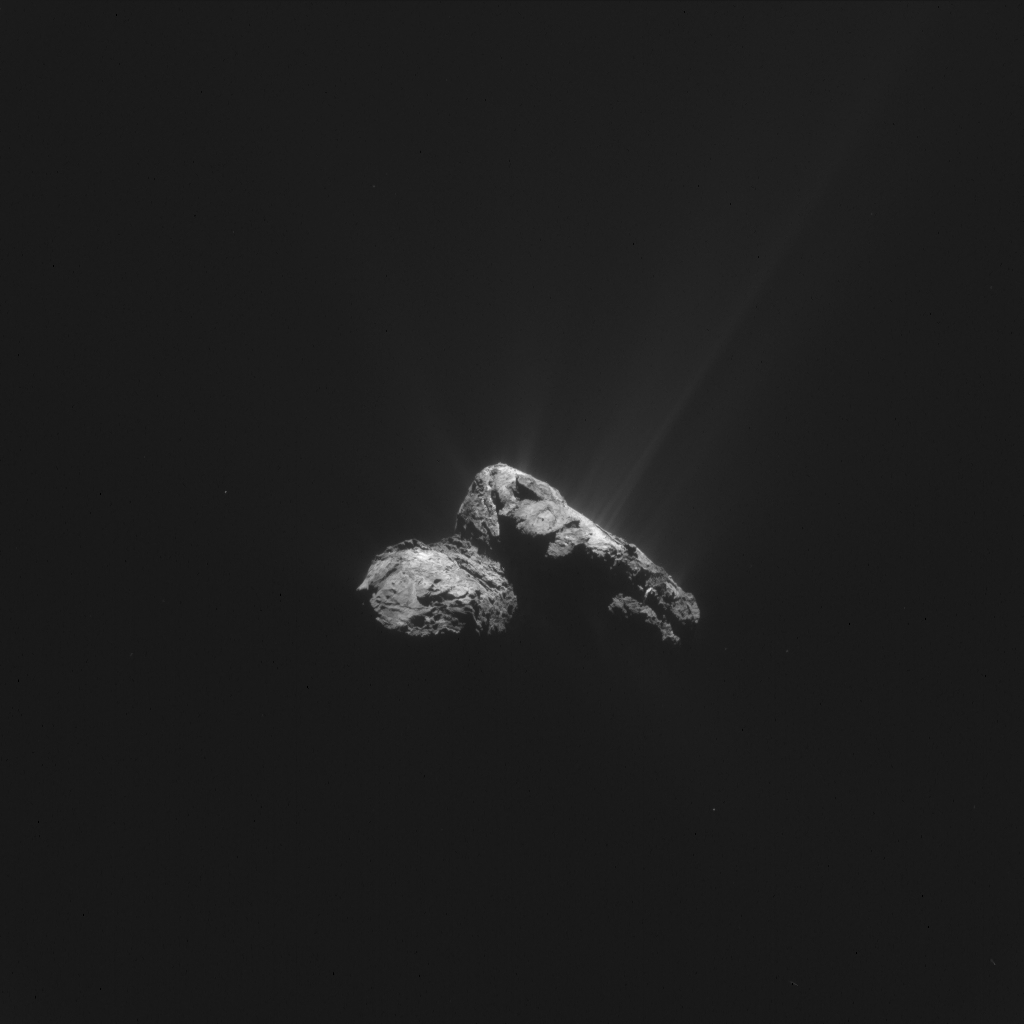Today’s spectacular CometWatch entry was taken by Rosetta’s NAVCAM on 30 July 2015 from a distance of 178 km from Comet 67P/Churyumov-Gerasimenko.

Comet 67P/C-G on 30 July (with contrasts enhanced) from a distance of 178 km. Credits: ESA/Rosetta/NAVCAM – CC BY-SA IGO 3.0
The image scale is 15.2 m/pixel and the image measures 15.6 km across. Although the activity is visible even in the original image (below), the contrast has been increased in the enhanced image above to better show off these details.
It is clear from the prominent jets of dust and gas streaming from the nucleus and out to the edge of the camera’s field of view that activity is becoming more intense – the comet is now just over a week from perihelion on 13 August, its closest approach to the Sun along its orbit.
But, while the increasing activity provides dramatic views, it can also lead to difficulties in navigation. Indeed, Rosetta’s star trackers have struggled to identify stars among the large amount of debris being ejected from the nucleus during the last week and is therefore currently moving to safer distances – it will be at about 300 km by Saturday.
For more information about perihelion, see our background article and FAQ.
Full details of our perihelion Google+ Hangout on 13 August are also coming very soon.
The original 1024 x 1024 pixel image for today’s CometWatch entry is provided below:










Discussion: 6 comments
That main jet from Imhotep is right in the middle. It could be coming from just east of the ’roundish features’.
Hi Cooper. Maybe intensity related to electron availability.
Generally rather limited ‘availability’ – in mobile form at least – on an insulating body.
_Hi Harvey 🙂
Limited? Agree. Not by far near to those generated by UV radiation. But speculating is enough to progressively accumulate charge at surface and generate a relevant field.
A ‘beastly wet’ ducky is not that much insulating.
You are astute and right logan. Electrons accumulated as a surface negative charge would be there in a quantity too large to imagine, and they would be fully mobile, from all parts of the nucleus surface to all other parts.
Finally found my daughter 3D cartoon lenses. Yep, they [roundish features] indeed appear to my mind, like many others before, after a year, as electric features [Not thunder kind, but aurora kind].
These are lower lands of basin. Muddy, salty kind.
https://www.esa.int/spaceinimages/Images/2015/07/Imhotep_3D